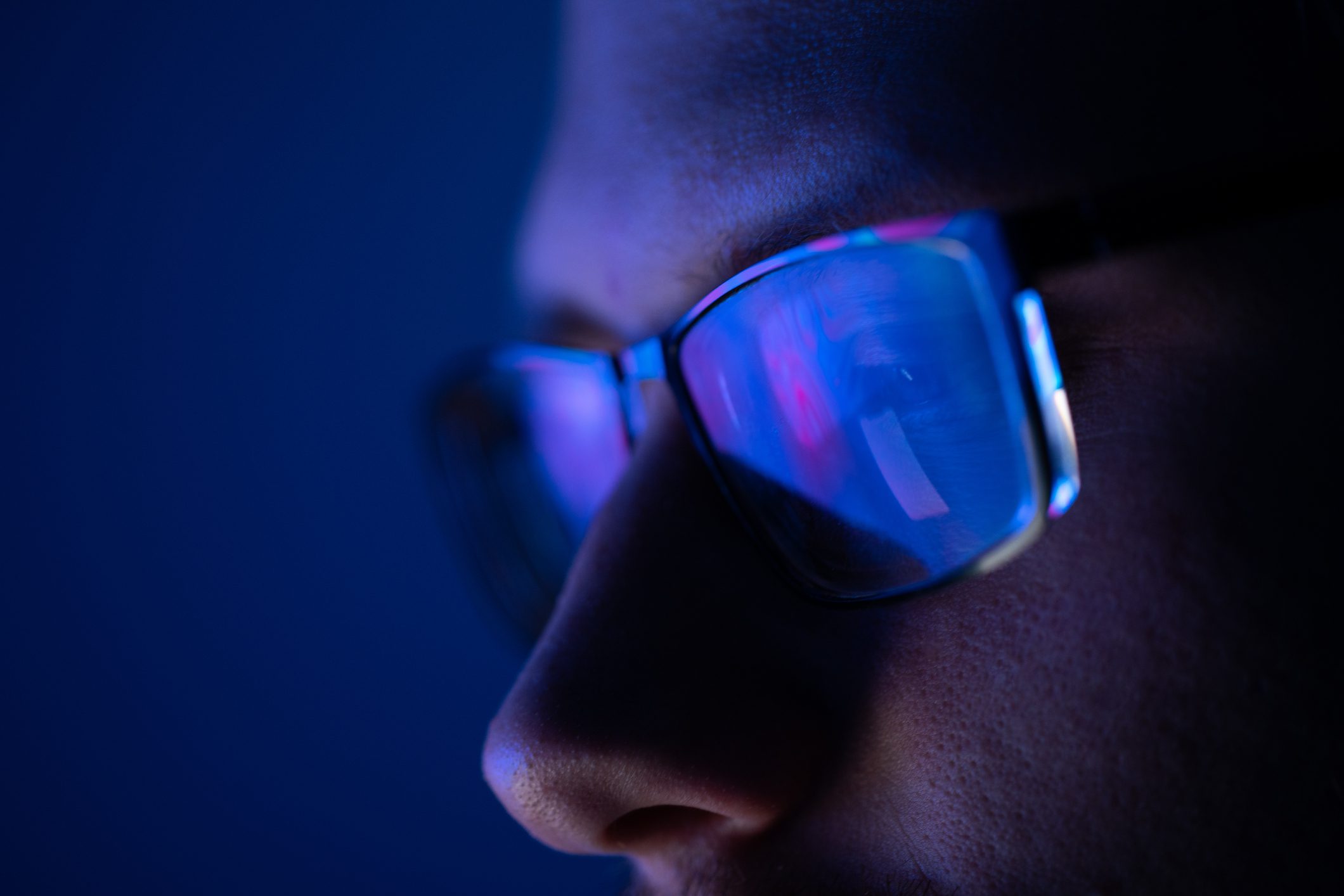Blue Light: Trend or Truth?
Most of us already recognize the dangers of digital eye strain – the discomfort you feel from staring at a computer or phone screen for too long. Your eyes may feel tired and dry, and more than 25% of adults report that digital eyestrain causes headaches, too.
For millennia, people didn’t have computers and phones to stare into for hours each day. It’s a problem that has come about in the technological age and has worsened each decade as computers and phones become ever more ingrained into our daily lives.
Despite the rise in symptoms, research is unclear about what causes digital strain and what the long term impact of that strain might be. In the optical industry, blue light is getting more and more attention as lens manufacturers find ways to block out the reportedly damaging light rays, but is it just a trend or is there some truth behind it?
Blue Light’s Bad Reputation
Blue light is high-energy light that has more energy per photon of light than other colors that our eyes can see. Blue light at high enough doses is therefore more likely to cause damage when absorbed by various cells in our body.
In recent years, studies have drawn a connection between exposure to blue light and increased brain stimulation and possible damage to the eye. For example, some studies have claimed that blue light passing through the cornea and lens to the eye’s retina can cause issues such as dry eye or even cataracts and age-related macular degeneration. It’s a scary thought that our retinas could be damaged by light entering our eyes from screens that we spend hours looking into each day.
However, scientists are not in agreement that digital devices emit a strong enough light to harm our eyes. In fact, the American Academy of Ophthalmology says that, “There is no scientific evidence that blue light from digital devices causes damage to your eye. The discomfort some people have after looking at screens is most likely digital eye strain.”
The Real Impact of Blue Light
While blue light may not be as harmful to the eye itself, it could still be harmful to you overall. Scientists do agree that blue light has the potential to disrupt your circadian rhythms, a physical cycle our minds and bodies go through each day. Circadian rhythms are affected strongly by light and darkness, which is why some people experience seasonal depression like “the winter blues.” Because of that, blue light has the potential to disrupt your sleep, mood, and even appetite.
In addition, the strongest risk of blue light overexposure does not come from digital devices but instead from the sun. Therefore, the best steps to protect your eyes from UV and blue light damage is being sure to wear quality sunglasses when outside. And if you’re experiencing eye discomfort while looking at your screen, it’s probably due to eye strain. Be sure to let your eyes rest every twenty minutes for twenty seconds by looking at something twenty feet away from you. This 20-20-20 rule can keep your eyes from becoming overtired.
If you’re unsure if blue light is negatively affecting you, the eye specialists at Vistar Eye Center are here to help you. Reach out to us with any questions, and we’ll be glad to get you on the right track.

